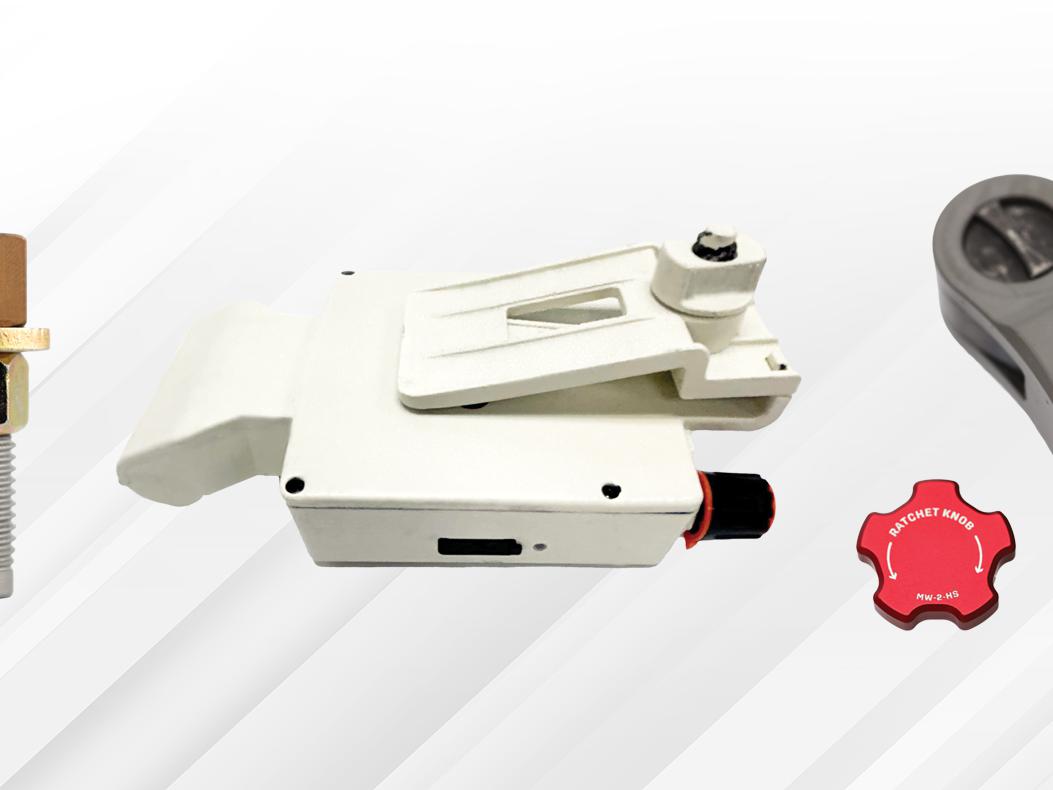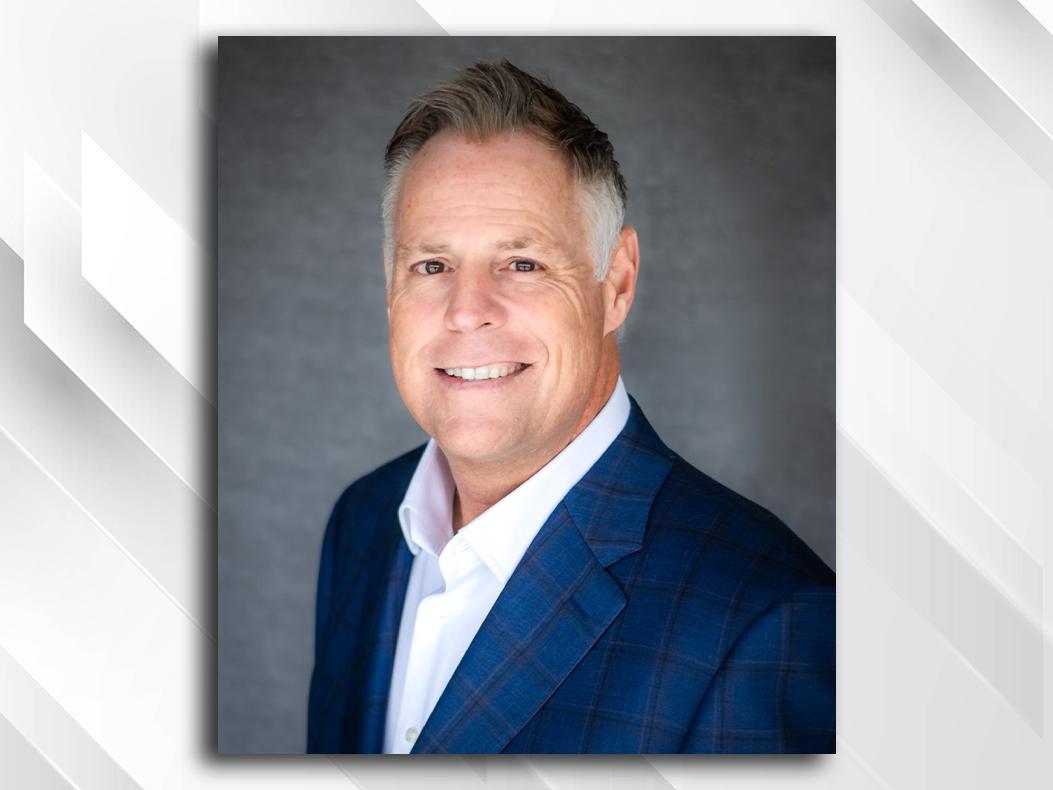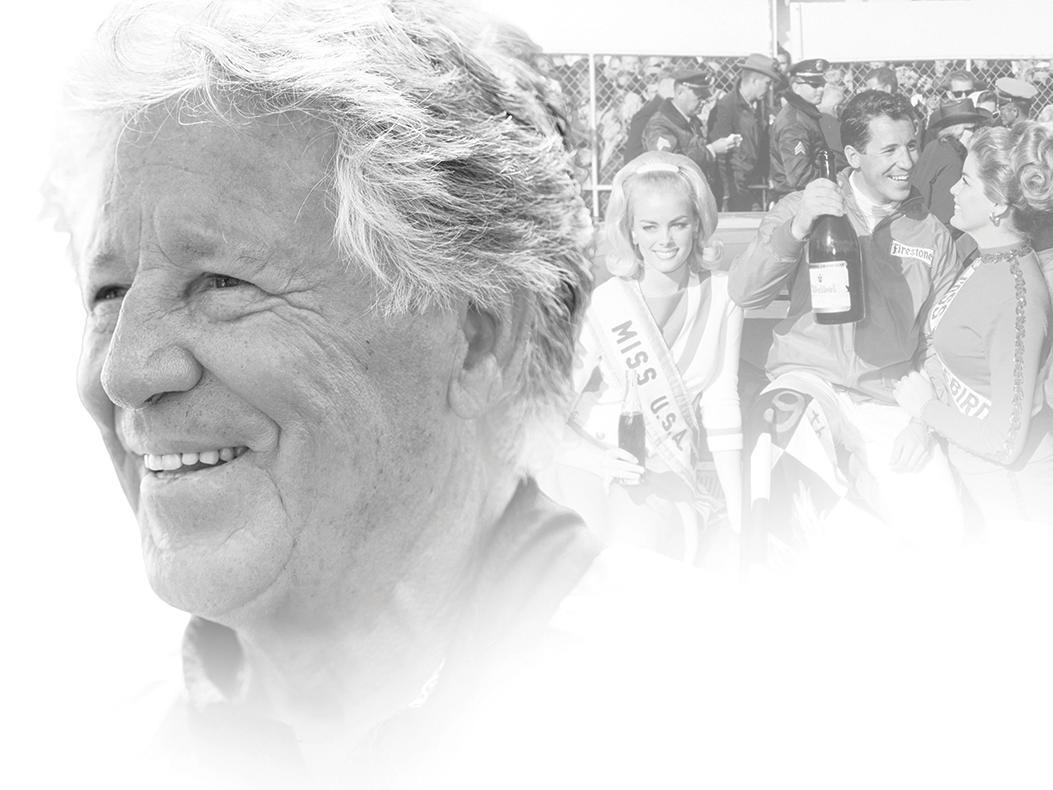INDUSTRY INSIGHTS: Kevin Swindell
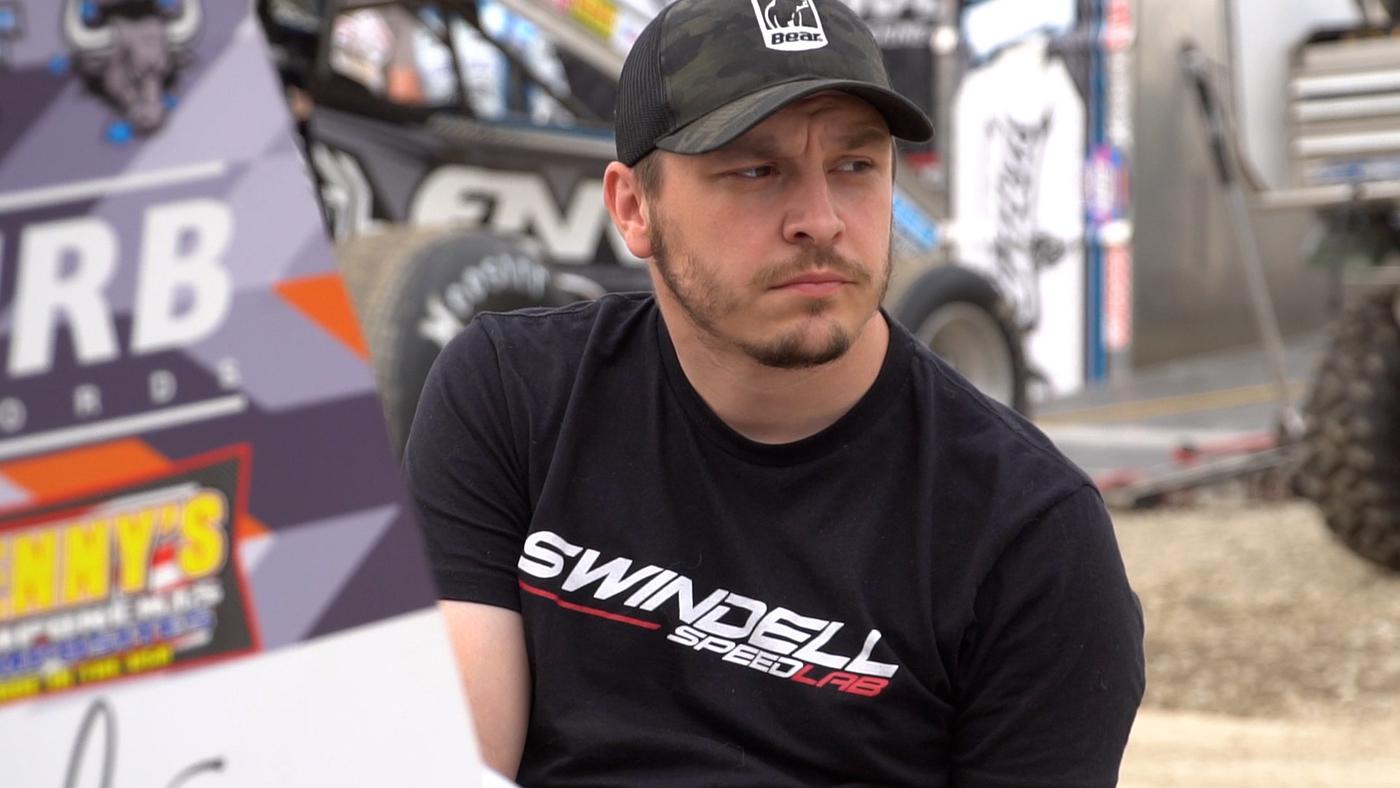
An accomplished racer before destiny intervened, this budding entrepreneur with a familiar surname dishes on social media, the fender vs. open wheel debate, life lessons, and much more.
From the time of his birth, Kevin Swindell seemed destined for a future in motorsports. A third-generation racer, he watched his father Sammy Swindell rise to become one of the greatest sprint car drivers in history, and as a teen Kevin began forging his own path as a professional driver. He was quickly successful, winning with the World of Outlaws sprint car series at age 17. Swindell also won the vaunted Chili Bowl Midget Nationals four consecutive times from 2010 to 2013, becoming the only driver in history to do so.
Swindell’s destiny took a dramatic turn in 2015 when he suffered a spinal injury in a racing crash. Undeterred, he redirected his motorsports passion into a new role as a team owner. Three years ago, Swindell and his wife Jordan took the concept of racing apparel to a new level with the launch of Swindell SpeedLab, a consumer-oriented brand of apparel and merchandise. Capitalizing on the power of social media, SpeedLab has been an interesting example of how to successfully combine the traditional aspects of a racing team with merchandising and marketing.
SpeedLab continues to campaign a sprint car with various series, and Kevin’s father Sammy wheeled the car through the majority of this past season. Kevin Swindell recently sat down with Industry Insights to share his thoughts on transitioning from driver to business owner, the state of short track racing, what comes with a famous last name, and the advice he’d give his younger self.
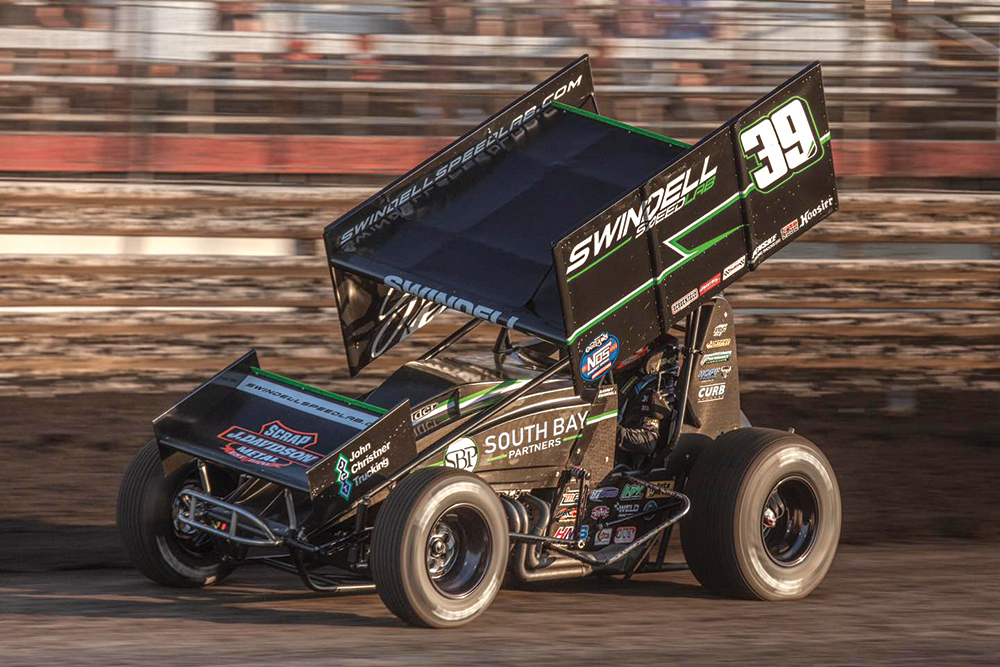
PRI: Running a business is a very different thing than driving a race car. What did you have to learn to do differently when you launched SpeedLab and were tasked with growing a business?
Swindell: Literally, I had to learn how to run a business. I knew nothing on that side of things. I spent the first 25 years of my life nailed down to the idea that I was going to be a race car driver, and nothing else. I finished high school and I didn’t go down any paths toward business, or running a business. So it was definitely a learning curve to understand how a business flows, dealing with manufacturers and learning the wholesale side of things, getting your pricing right, logistics on shipping, those kinds of things. Luckily my wife has a college degree and worked in management, so she had a mindset for management where I didn’t. I just tried to focus on the creative side of things, and bring in partners for the race team, and collaborate on the merchandise.
Probably the hardest part of all of this was changing my sleep schedule from that of a race driver to that of a businessman. (Laughing.)
PRI: You’ve embraced various digital tools to promote your brand. Social media, YouTube, etc. What’s the key to developing a message and getting it out effectively?
Swindell: The key is having fun with it. And being yourself, as much as anything. So much of what we see today is so scripted, and it feels forced. For us, we never wanted to ram products down your throat. We didn’t want it to be just “buy, buy, buy.” We wanted to show you cool stuff, and if you like it, you can go through the steps to purchase it. People like to see behind the scenes, and they like real people and they don’t want things to be scripted. People also want to be part of something, so making them feel included is important. When you buy something from SpeedLab we want you to feel like you’re part of the family.
PRI: Social media is obviously very effective, but it also has a dimension that isn’t always enjoyable. How do you deal with people who are, let’s just say, not supportive? There is a level of nastiness out there, how do you navigate that?
Swindell: (Laughing.) I think our initial reaction is to always argue with people in those cases. But I finally realized that you never get anywhere with that. If someone got a reaction from you, that’s all they wanted. I started going down the path that if I didn’t reply, nobody else liked it or replied to it or retweeted it, then I win. That was the route I decided to take. Once guys (make nasty comments) once or twice and get no response and nobody else backs them up on what they’re saying, they kind of give up. And I take pride in the fact that I’ve never blocked anybody on anything. I’ve always stood behind whatever opinion I might have, and never ran from anybody else’s opinion, either.
PRI: You have an open wheel background, and your team campaigns an open wheel car, so it would make sense that most of your customers are open wheel fans. We tend to segment racing fans by each niche: NASCAR, IndyCar, sprint cars, dirt late models, and so forth. As a business, how do you effectively cross over into different segments?
Swindell: Oh, yes, there is a silly war between the fender people of the world per se, and the open wheel side of things. I think that’s silly because I’ve always been just a race fan. When I’m at home on the weekend, I watch modified races, Late Model races, and sprint car races. Even within sprint car racing, the battle is between winged racing and non-wing racing, and I don’t understand that either. Why not like it all? It’s very segmented.
We obviously have a good footing on the sprint car side of things, but we’ve tried to branch out. We want to be friendly to other segments, and we took the T-shirt trailer to Cherokee Speedway (in Gaffney, South Carolina) recently for some Late Model races and did really well. So we’re pro-race car, and it doesn’t matter to us which type. That’s a big thing for us and we keep trying to find ways to keep growing.
PRI: Beyond taking the T-shirt trailer, how else can we build those bridges? If I am a Late Model racer, or a drag racer, how would you convince me that I should become an ambassador or advocate for sprint cars?
Swindell: Honestly, I don’t know. The only real trick is just being there, going to other events and trying to branch out. Ideally, we’d see more drivers cross over from one area to another, but that’s a tough challenge. With stock cars or sprint cars, the cars are so hard to drive and hard to learn that you can’t just have a “celebrity” driver come in and bring new fans with them. If you put someone into a sprint car who has never driven that type of car, for example, he’s probably going to be terrible. You can’t just grab somebody from another world and have them bring their fan base.
But social media has been important in people crossing over. You see sprint car people following stock car people who follow drag racing people. That’s opened a lot of eyes and raised a lot of awareness. And I don’t really understand that whole divide, and why stock car fans would argue with sprint car people on which type of car is superior. They both have things that make them cool, in my opinion. I just appreciate good racing and I try to be inclusive to all types of racing.
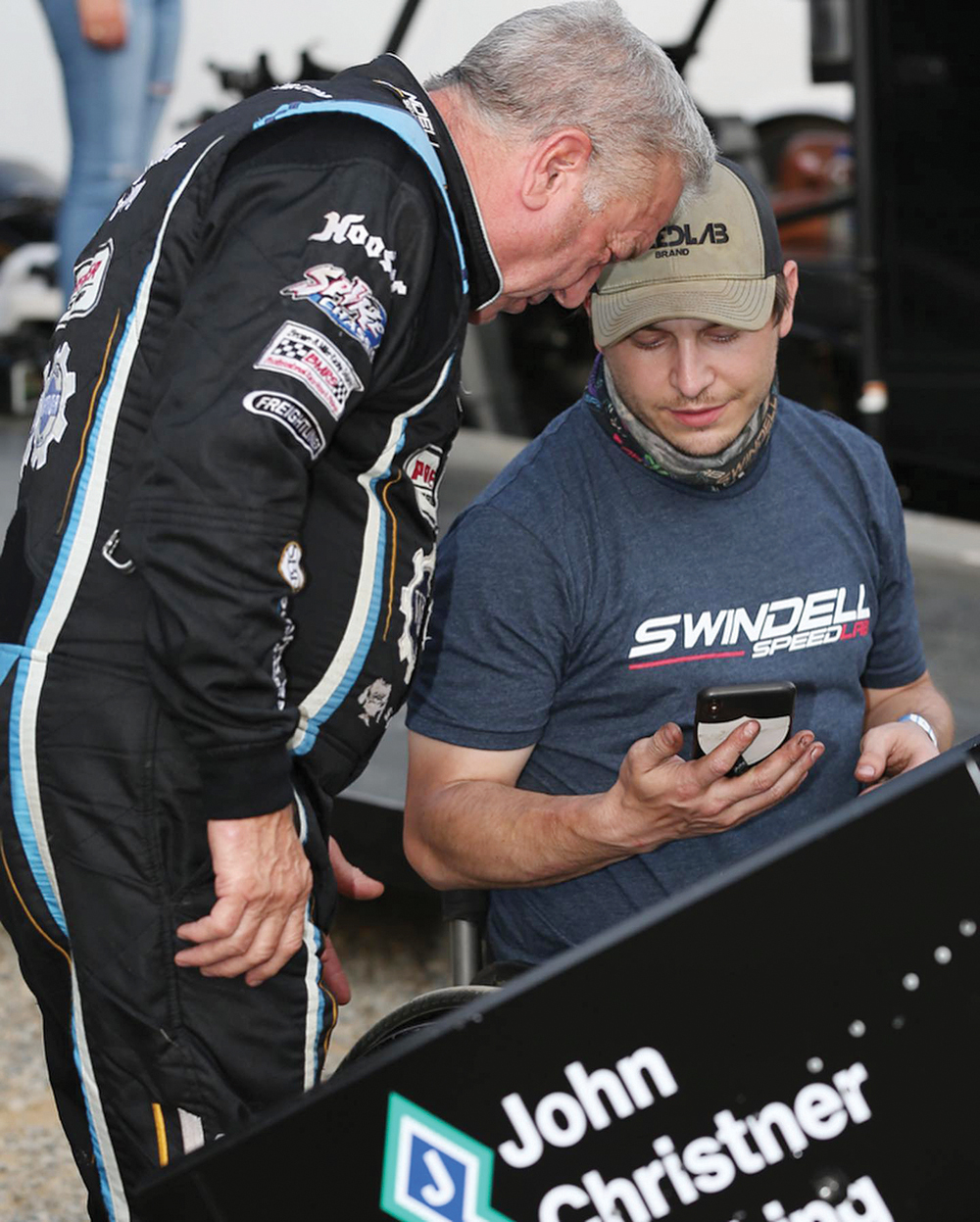
PRI: You’ve grown up around racing. That gave you a large network of friends and potential business leads. How much does that help you promote SpeedLab and connect with racing people?
Swindell: The social media audience was huge, and trying to grow all that and being able to put it in front of so many people right off the bat, that was big. And the Swindell name was also a big help. Yes, it definitely helps you get into places. I’ve always felt like when I was first starting, that was both a blessing and a curse. The name would get you in the door easier, and there were things that were simpler to accomplish. At the same time, you faced a preconceived idea that there was no way the next generation was nearly as good as the previous, and they’re only there because the equipment, and this and that. But overall, yes, having an existing fan base was big for us. It definitely didn’t hurt. There’s not a lot of negative on the business side of things.
PRI: That’s an interesting statement about the blessing and curse of a famous last name. How were you able to turn that into a positive, or flip it to your advantage? How did you distinguish yourself as a new generation?
Swindell: I’m not sure I was able to do that. Early on I spent a lot of time, honestly, trying to figure out how to remove the Swindell name from the discussion, and that’s part of the birth of the SpeedLab brand. I didn’t want to make it about me, or dad, or anything else. I wanted it to stand on its own. As we talked to people, I realized the Swindell name was a draw and it could help us. What I really learned was that both brands are helpful. There was an original fan base my dad and I both built. We definitely ran into people who were “anti” because of my name, and we just tried to ignore that element. We just wanted to try to be who we were, and over time I think people finally gave up trying to compare me to my dad.
PRI: Despite the costs, despite the challenges, from all indications short track racing is pretty healthy in terms of car count, etc. What’s your view of the state of racing at the short track level?
Swindell: It looks good. It’s good that a lot of these race tracks are investing back into their facilities. Places like Port Royal and Eldora, they just keep getting nicer every year. They are trying to make the fan experience better. Car quality feels like it’s getting better; there is more parity in the winners. Which I think is really good for the overall viewership of the sport. You always want to be the guy who wins every race, but having multiple winners and different guys winning every night is really good for us. Things are healthy right now and they continue to grow. We definitely put a better product on the track right now than many of the major series. You always bring somebody over from a NASCAR race and they’re like, “Wow, this is cool!” But it’s hard to get them nailed in and drawn in to our sport. We’re doing a better job of that, making the (video) streaming better and more accessible to people, and getting more people to watch from home. Especially this year when people couldn’t go to the race track as much. Putting our sport in front of more and more people should get them to the race track when things go back to normal, and that’s huge. We’ve shortened up our programs, which is also good, and getting people out of the track and home before 10 or 11 o’clock is huge as well.
PRI: What do racers today struggle with the most? Is it understanding the technical side? The business side? Marketing and promotion? Honing their skills? Or is it something else?
Swindell: I think a lot of people underestimate the little costs involved in racing. Depreciation, things like that. You look at what it costs to buy something, but you don’t realize what it costs to abuse it over a period of time. That’s for sure true on the race car side. And there is a big-picture issue of thinking of your team as a business and making decisions that make business sense. People always bug me about why we didn’t run this race or that race, and the reasoning is because it doesn’t make sense financially to run that event. People don’t realize that it doesn’t pay enough to just show up. It almost makes sense if you win, but if you win a $10,000 race and you add in your costs, there isn’t a lot of win there. It comes down to what the stickers on the car pay you, not necessarily the purse.
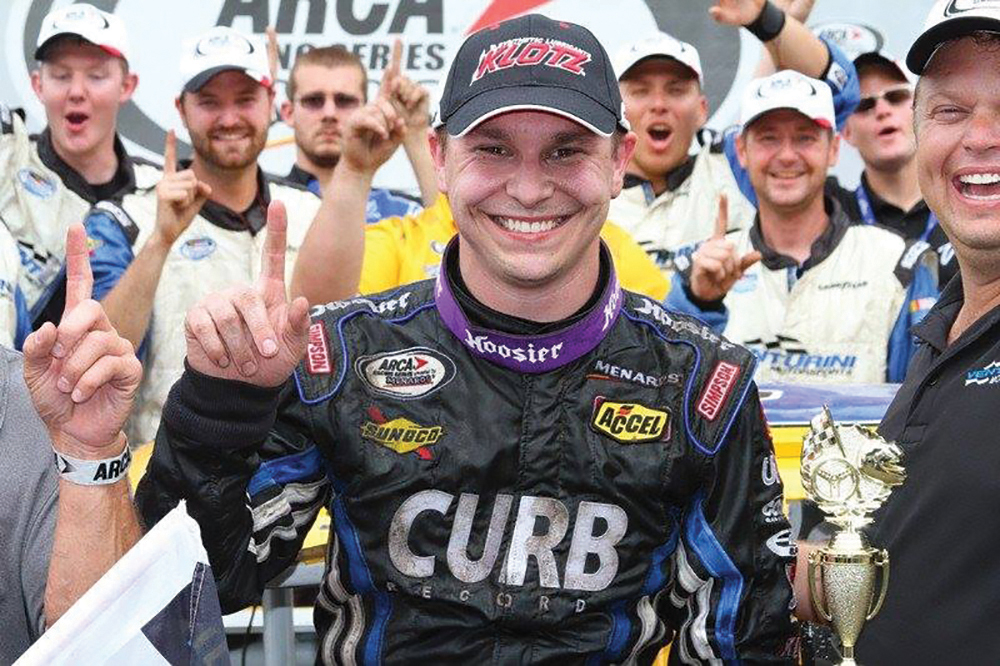
PRI: Along that same line, with a race team or with a business, there is an old adage that a person doesn’t really understand the financial details of an entity until they’ve run that entity themselves. Paid the bills, handled the invoices, generated the revenue. Would you agree?
Swindell: Yes, absolutely. This is all rainbows and fairy tales if you’re not worried about making a profit. If you’re involved in a business as a hobby, it’s a lot of fun. But when you start stressing over the financial pieces, it’s not fun. It’s tough to come out ahead in any business unless you find some good people to help out along the way. That takes a lot of the stress away.
PRI: If you had the power to change one thing in racing today, what would it be? What issue would you love to see addressed?
Swindell: There are a lot of little safety things I’d like to change. But I don’t know of one glaring thing that is a huge issue for us. I wish we had a better situation to be prepared for fire. I think a lot of race tracks aren’t prepared, and you run into a lot of empty fire extinguishers or guys not set up properly, or people who think they are ready to handle a situation when they aren’t.
I kind of wish we could try a Supercross style of format for our events. Get a lot of the early race stuff done in an afternoon setting, and have people allowed to roam around between the day show and the night show. Show up for your main event and your feature and speed the shows up—that would improve our fan experience a little bit. I think there are some ways that if we could package our events into less time with more excitement, we could really take that next step.
PRI: We’ll wrap it up with this, Kevin. What life advice would you give your younger self—say, a pre-teen or teenaged Kevin Swindell? What insight would you have shared with yourself back then? What would you say to that 15- or 16-year-old Kevin if you could?
Swindell: Oh, man. If I could go back, I’d try to think a little less that it was “me against the world.” A lot of time I think I was put in a corner a little bit because of my last name, and I was ready to fight for my right to be there and not just because of my name. But that’s a good question. Some of the time back there, I feel like I shot myself in the foot because I thought my ability to drive a race car was going to be enough. As sad as it is, at some point that’s not what completely mattered. There was a window, and I came along a little bit late for that window. So I would tell myself to do a better job chasing money and building relationships because those are the things that will advance your career, and not just being able to drive a race car.
PRI: This has been interesting, Kevin. Thank you for giving us some time. And good luck with your team and your business in the months to come.
Swindell: Thank you, Dave.
 MEMBERSHIP LOGIN
MEMBERSHIP LOGIN JOIN PRI
JOIN PRI
